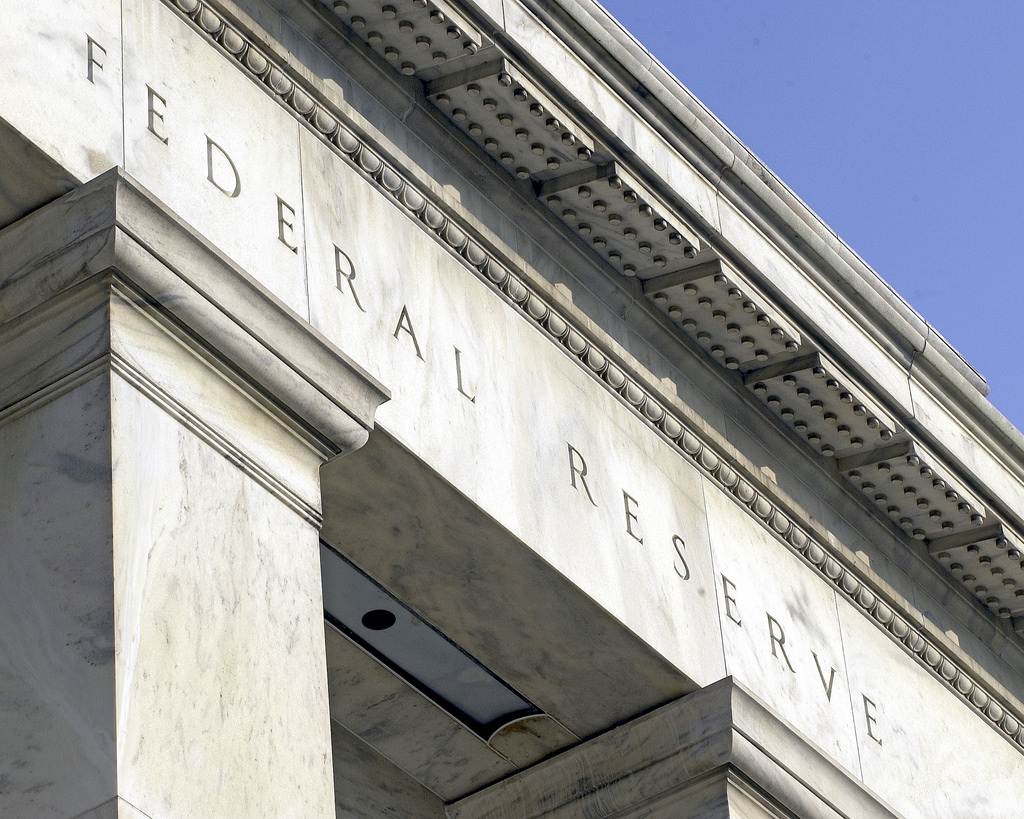Amundi: The Fed cuts rate, but the market expects more
Amundi: The Fed cuts rate, but the market expects more

By Jon Duensing, Director of Investment Grade Corporates, US Portfolio Manager, Christine Todd, Head of Fixed Income, US, and Timothy Rowe, Director of Multi-Sector Fixed Income, US Portfolio Manager
Fed cuts rate, but will assess data for future action
As expected, the Federal Reserve lowered its target range for the Federal Funds rate by 25 basis points to 1.75% - 2.00% at its September meeting. The policy decision was a response to slowing global growth, lingering uncertainty about trade policy, and muted inflation pressures. However, despite concerns over export weakness, the Fed’s economic projections changed little from its last update in June: the median estimate for 2020 GDP growth remained unchanged at 2.0%.
Although Fed Chair Jerome Powell repeated that the Federal Open Market Committee (FOMC) would “act as appropriate” in the future to sustain the US economic expansion, there are signs of growing divisions among the Committee members around what the appropriate level for the Fed Funds rate should be in the future. In the Fed’s “dot plot” indicating member’s forecasts for future rates, seven members’ “dots” for year-end 2019 forecast another 25 basis point interest rate cut, five members project no change, and another five members project a 25 basis point hike. Post-FOMC meeting Treasury market movements reflected a “hawkish” reaction from investors, as two-year Treasury yields closed 8 bps higher than prior to the announcement.
In our view, the FOMC will need to see either weaker economic data or an intensification of the U.S.-China trade war in order to cut the Fed Funds rate again during the remainder of 2019. Fed Funds futures market pricing continues to diverge from Fed forecasts, and implies one more 25 basis point rate cut by year-end and two more 25 basis point rate cuts by year-end 2020. Our expectations are more aligned with those of the FOMC. We expect fewer rate cuts than the market.
Temporary stress in the repo market
The market for repurchase agreements, or repos, came under stress during the week of September 16, as the combination of a quarterly corporate tax payment deadline and a large amount of Treasury new issue settlements resulted in a temporary mismatch in the demand for funding and the availability of cash. Overnight repo rates, which had been roughly 2.2%, rose as high as 10% as borrowers scrambled for short-term financing. In response to the shortage of funding, the Federal Reserve Bank of NY injected $75 billion of cash into the market via temporary open market operations to help alleviate market stress. Repo rates quickly returned to the 2% range. While a sudden pullback in liquidity and its impact on the shortterm repo markets is not a new occurrence, the magnitude of this event was greater than recent episodes. This was in part due to the decline in the Fed’s balance sheet and excess reserves in the banking system. Given the recent tapering in the Fed’s balance sheet, domestic excess reserves have declined from $2.8 trillion in 2014 to approximately $1.4 trillion currently. Research by economists at the Federal Reserve Banks of Philadelphia and New York estimates that under the FOMC’s current floor system for managing the effective Fed Funds rate, the required supply of reserves could range from $500 billion to $1.2 trillion, depending on the distribution of excess reserves across banks. The recent stress in the money markets suggests that the required supply of reserves is somewhat higher than $1.2 trillion, and it is likely the FOMC will resume trend growth of its balance sheet as early as November of this year.
US Rate Outlook
We view the Fed’s current easing as a mid-cycle adjustment as it works to “fine-tune” policy in the face of elevated global uncertainties, rather than an attempt to truncate a recessionary economic environment. Barring a deterioration in the outlook for US growth and the US labor market, and barring a further escalation in the US-China trade war, the Fed is likely to pause to monitor the effects of the rate cuts on the economy. The Fed dot plot indicates that the long-term neutral rate remains at 2.5%. This suggests the bias for rates is ultimately higher rather than lower.
By most valuation metrics, US 10-year Treasuries are expensive, and external events have played a large role in the recent move lower in US yields. We expect the US Treasuries to move in a trading range in the short term, with limited upside in yields expected in the next six months. But we could see some upward pressure in yields should growth prove more resilient than expected.
Investment implications
Given our outlook and current market valuations, we view it appropriate for fixed income investors to seek opportunities across multiple sectors, move up in quality, and maintain a relatively modest risk stance. Taking positions in securitized credit sectors, such as asset-backed securities, commercial mortgage-backed securities and residential mortgage-backed securities, are consistent with this approach. These sectors are particularly attractive when considering valuations, strong credit protections, a US consumer focus, and lower exposure to global growth risks. Agency mortgage-backed securities are also increasingly attractive following the recent widening in spreads. On duration, we believe that interest rate duration exposure in US fixed income should be limited. The strength of the services sector, the consumer and small businesses support a view of higher US rates and a more reserved Fed. That said, we recognize the benefit of long duration US Treasuries as a hedge in a risk off environment.






